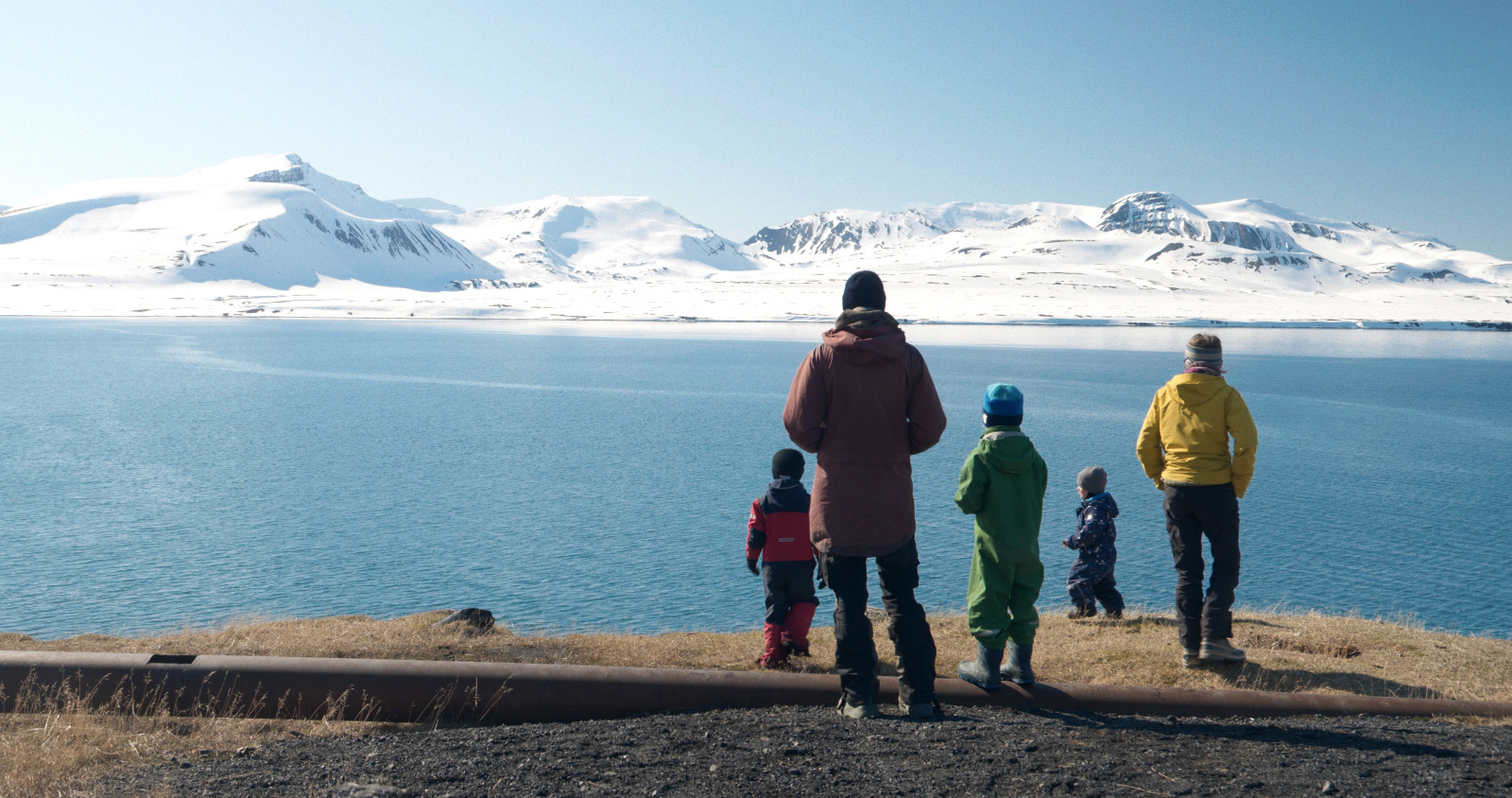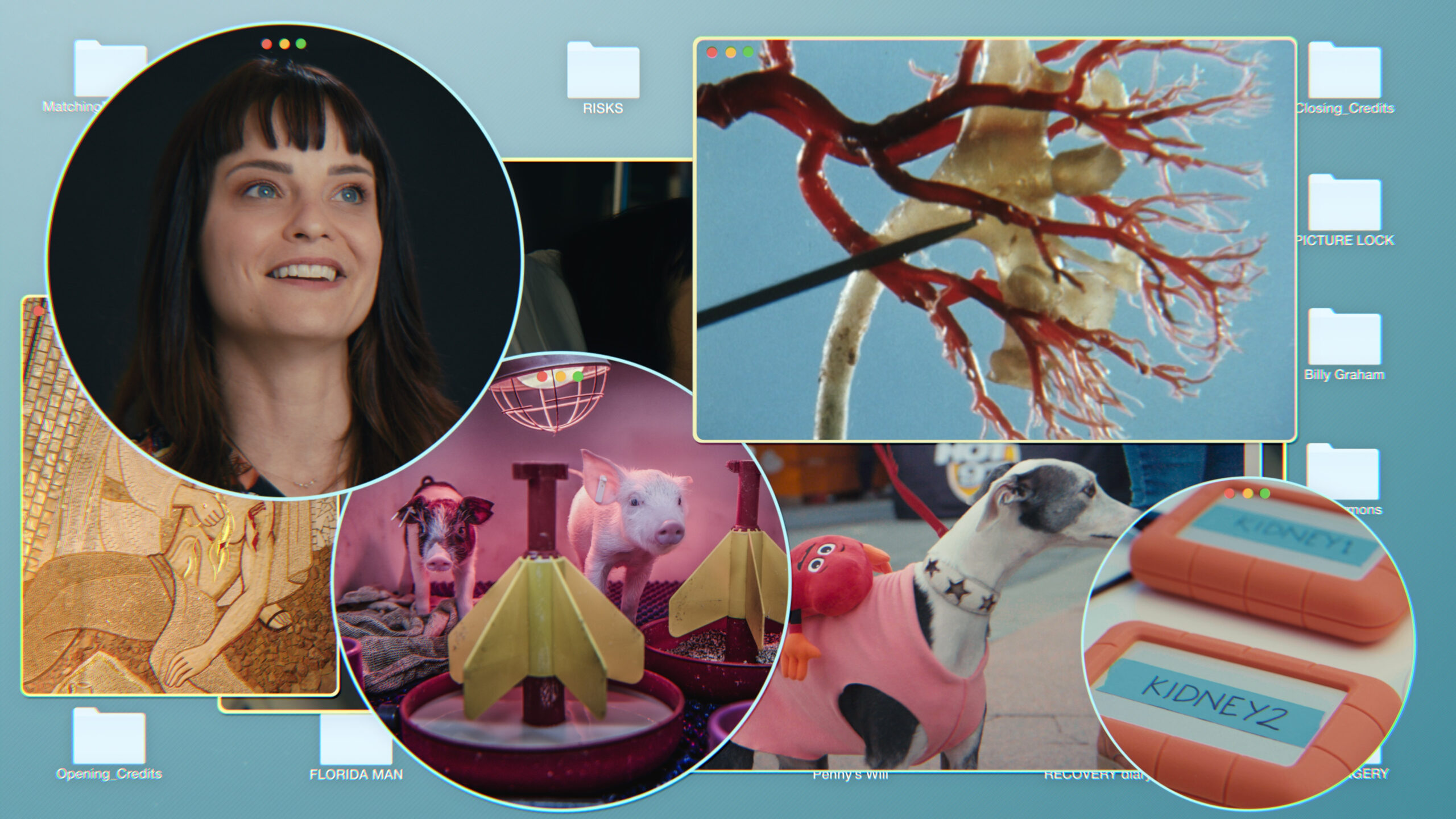The Visitors
(Czech Republic/Norway/Sweden, 83 min.)
Dir. Veronika Lišková
Programme: The Changing Face of Europe (Canadian Premiere)
Czech researcher Zdenka Sokolícková finds herself at a fascinating collision of anthropology, NIMBYism, and cultural survival in The Visitors. The film by Veronika Lišková observes as Sokolícková conducts research with some of the 1700ish residents of Longyearbyen, Norway. Sokolícková recently moved her family to Svalbard, the archipelago that houses this remote arctic town. Longyearbyen, moreover, offers Sokolícková a ripe case study in social anthropology. Established as a mining town in 1906, Longyearbyen is a sort of Wild West of the Norwegian arctic. Anyone can live there and conduct business so long as they have an income and a residence. However, the town has a population cap, and the limited growth potential and extreme living conditions make it a transient place. Even though it’s a “revolving door society,” locals worry that Longyearbyen houses too many foreigners. Sokolícková, a foreigner herself, becomes part of her own inquiry.
The Visitors features excerpts from the interviews that Sokolícková conducts with residents both temporary and long-term. She conducts her conversations in English since she doesn’t speak Norwegian and English is the common tongue. As one of the locals passive aggressively tells her, one can barely function in Longyearbyen without some English. Residents feel the town is losing its Norwegian identity. Sokolícková quickly grasps the thread of her interviews: outsiders like her are not welcome. One interviewee tells her so adamantly and directly.
Long-term Residents and Long-Term Tourists
In between the interviews are verité interludes with Sokolícková, her husband, and their children. They roam the barren land, toboggan, and study the layers of ice. Sokolícková enjoys raising her kids at such an idyllic pace.
The Visitors features plenty of interviews with people like Sokolícková to give the full story. Most residents are from Europe, while others hail from as far as Thailand or Africa. They tell how they came to Longyearbyen to escape the pace of life down south. Like Sokolícková, they relish the refreshing oasis of crisp air and fleeting daylight. But they too acknowledge that the oasis is mostly a mirage.
For example, one of Sokolícková’s interviewees tells her about her own research on climate change. As the northernmost town in the world with a population over 1000, Longyearbyen feels immediate effects of global warming. There’s less ice in the water, glaciers are declining, and Christmas brings rain rather than snow. Moreover, even long-term locals acknowledge that life in Longyearbyen isn’t sustainable. All their food arrives via ships. Coal mining is a key resource. Houses use excess energy for heating and lighting. Living their simply contributes to the thaw they feel.
At the same time, relatively new residents and non-Norwegians share the personal and systemic efforts to remove them. Stories about specialized schools that favour “brighter” kids (re: native Norwegians) see residents in distress. Others worry about impending voting laws that strip their rights. Locals want to make Longyearbyen great again, but the closer that Sokolícková looks, the preservation seems awfully self-serving.
Who Are the Visitors?
The Visitors plays these conversations off another with picturesque views of the landscape punctuating the study. The research yields an especially intriguing commonality: everyone in town came from somewhere else. Longyearbyen has no Indigenous population. Even long-term residents arrived for the same reason that the long-term tourists do. They wanted an escape, a change, and an adventure. But no long-term resident acknowledges this oddity. They all simply see it as a Norwegian versus outsider problem, shrouding themselves in convenient nationalism.
The observational shots that offer images of the town, moreover, capture evidence of development. Even if the people of Longyearbyen don’t embrace change, it’s here. Tourism replaces mining as an industry preference, which brings its own environmental, economic, and social challenges. The problem isn’t the foreigners: it’s the locals who remain frozen in another world. Lišková’s deftly articulates the gravity that Sokolícková navigates in her research: Svalbard might be a remote island, but it’s not disconnected from an increasingly globalised world.











